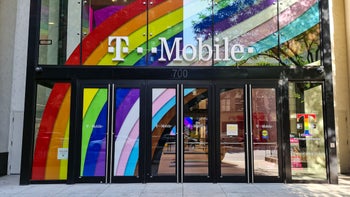FCC says no to proposal that would allow cellphone calls inflight

According to Bloomberg, the FCC last week voted down a proposal that would have allowed air passengers to make inflight voice calls using their smartphones. Pilots and Flight Attendants were "strongly opposed" to the idea in the first place. Back in 2013, the FCC looked at a plan that would allow in-flight calls to take place above 10,000 feet which is the rule in some European countries. But that led frequent flyers to fight back against the idea as they envisioned being forced to sit next to someone blabbering loudly on their handset. Also opposed, some members of Congress predicted that if the proposal is allowed to pass, passengers using their phone in the middle of a flight could face air rage from others on the same flight.
Back in 2017, FCC Chairman Ajit Pai, who was appointed by President Donald Trump, hinted that the agency would not allow the proposal to pass. One of Pai's predecessors had created it. At that time, Pai said, "Taking it (the proposal) off the table permanently will be a victory for Americans across the country who, like me, value a moment of quiet at 30,000 feet." But in addition to keeping the decorum on an aircraft, the restrictions against using a cellphone while onboard a plane was designed to prevent the devices from interfering with the equipment used by pilots for communications, flight controls, and navigation.

FCC shoots down proposal to allow cell calls on airplanes 10,000 feet up and higher
That same year, Taylor Garland, spokesperson for the Association of Flight Attendants, made the position of her union clear. "We are strongly against voice calls on planes," she wrote in one email. In another missive, she typed, "NO CELL PHONES." Cassandra Michele Brown, a flight attendant with Frontier Airlines, wondered whether the passengers on a flight would be able to follow flight attendant's directions if the plane needed to be evacuated.
While you might not be able to send or receive calls while flying on a commercial jet, some airlines like Jet Blue give passengers free Wi-Fi allowing them to send and receive text messages. However, both sides need to use an app that sends texts through Wi-Fi instead of requiring a cellular connection. Examples include iMessage, WhatsApp, and even Android Messages with Rich Communication Service (RCS) enabled.
Follow us on Google News













Things that are NOT allowed:
To help keep our community safe and free from spam, we apply temporary limits to newly created accounts: